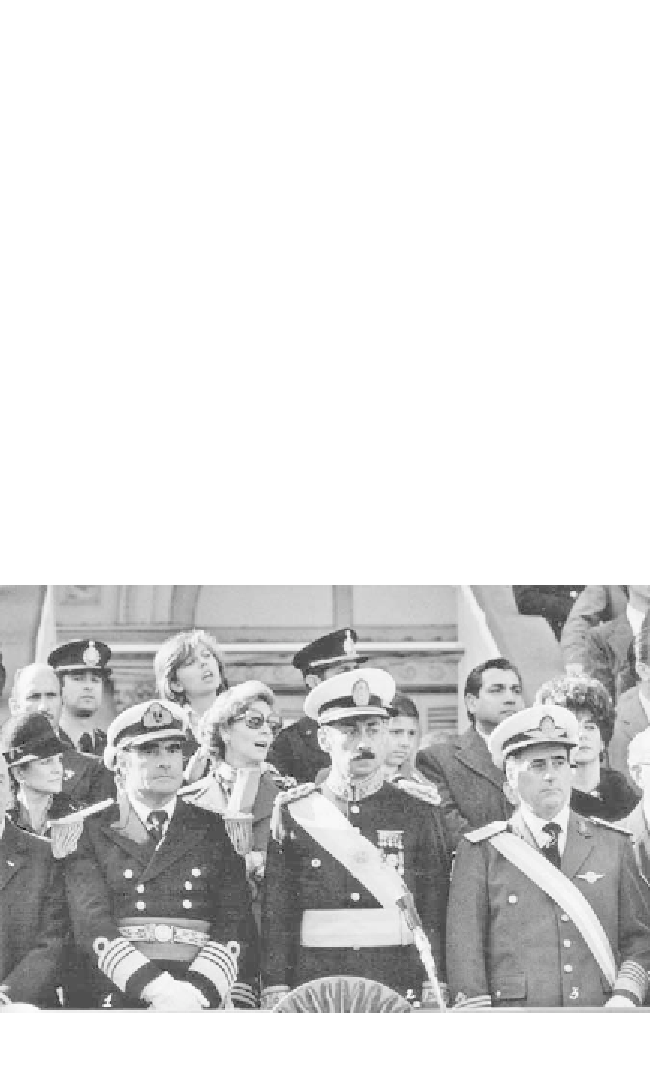Travel Reference
In-Depth Information
By early 1976, public opinion clamored once again for a military coup
d'etat. Newspaper editors, leaders of opposition parties, even workers
desired respite from the mayhem of civil strife and triple-digit infla-
tion. Those officers spat upon back in 1973 were deemed in 1976 to be
the only saviors to whom most Argentines could turn. Yet, the generals
waited. They wanted to build a real consensus for taking power again.
They felt they had it in March 1976, when inflation was running at 600
percent. The military brought a swift end to Isabel Perón's constitutional
presidency, which delivered relief to the apprehensive public. Surely many
must have suspected that the spasm of violence was far from finished.
El Proceso
The generals who seized power in 1976 instituted a far-reaching draco-
nian program that they called the Process of National Reorganization,
or El Proceso for short. They followed the Onganía example of 10
years before and filled the bureaucracy at the top with military officers.
Purges followed. Peronists who had not already gone into hiding were
dismissed from their government posts, and senators and deputies were
locked out of their offices. While factionalism still existed among the
top brass between the moderates and the hard-liners, the moderates
From left to right, Admiral Emilio Massera, President Jorge Videla, and General Orlando Agosti,
members of the ruling junta that implemented El Proceso
(Archivo General de al Nación)



